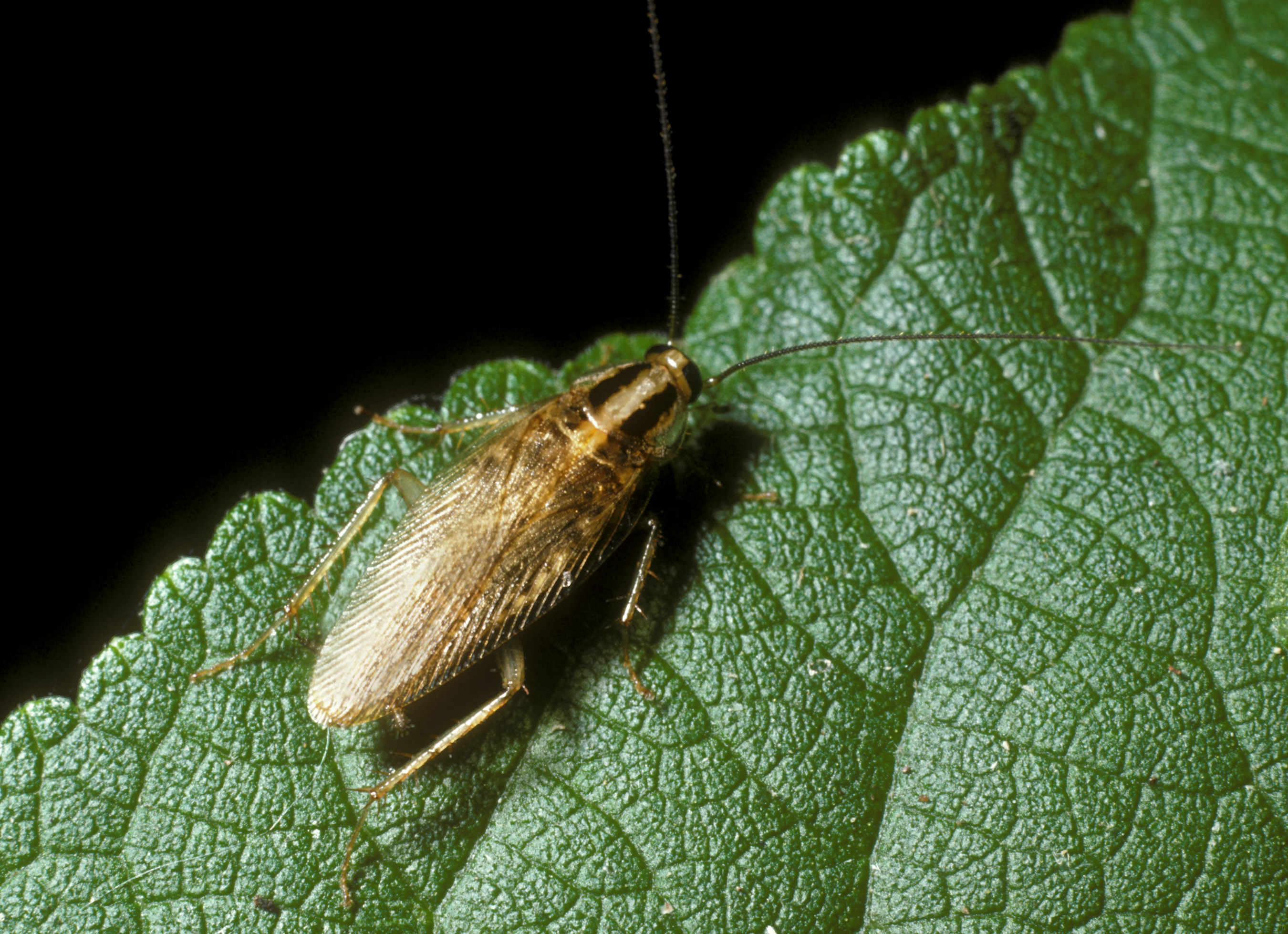- Asian cockroach
Taxobox
name = Asian cockroach

image_caption =
regnum =Animal ia
phylum =Arthropod a
classis =Insect a
ordo =Blattodea
familia =Blattellidae
genus = "Blattella "
species = "asahinai"
binomial = "Blattella asahinai"
binomial_authority = Mizukubo, 1981The Asian
cockroach ("Blattella asahinai") was first described in 1981 from insects collected on Okinawa Island, JapanRichman D. [http://creatures.ifas.ufl.edu/urban/roaches/asian_cockroach.htm Asian cockroach. "Blattella asahinai" Mizukubo.] "Featured Creatures". March 2008. Last accessed2008-08-08 ] . It is nearly identical to theGerman cockroach except for a few minor morphological differences. Like the German cockroach it is about 5/8 inch (1.6cm) long, is tan to brown in color, and has wings. However, its wings are longer than the German cockroach, and there is a difference between a groove in the abdomen between the two species. There are other differences. The quickest way to tell the difference between the two species in that the Asian cockroach is a strong flyer (almost like a moth) and is attracted to light, unlike the German cockroachRichman D. [http://creatures.ifas.ufl.edu/urban/roaches/asian_cockroach.htm Asian cockroach. "Blattella asahinai" Mizukubo.] "Featured Creatures". March 2008. Last accessed2008-08-08 ] .This species tends to prefer the outdoors, whereas the German cockroach prefers living indoors.
It is found in
tropical andsubtropical climates, and was first identified in theUnited States in 1986 inLakeland, Florida . It has since expanded throughout much ofFlorida and is spreading into other southern states. In addition to Florida, it is reported inAlabama , Georgia,South Carolina andTexas Richman D. [http://creatures.ifas.ufl.edu/urban/roaches/asian_cockroach.htm Asian cockroach. "Blattella asahinai" Mizukubo.] "Featured Creatures". March 2008. Last accessed2008-08-08 ] .Its population reaches it zenith in late August and declines rapidly with the onset of cool weather (Snoddy and Appel 2007). During adverse weather conditions such as cold weather or dry conditions the Asian cockroach will burrow down into the leaf litter (Snoddy and Appel 2007).
According to entomologist Bob Pfannenstiel (Beneficial Insects Research Unit, Weslaco, Texas), this omnivorous species also feeds, under certain conditions, on the eggs of lepidopteran pests of annual crops. Asian cockroaches ventured west into Texas in 2006, and became the most common predator of
bollworm eggs in the state's Rio Grande Valley region. The bollworm threatens cotton, soybean, corn and tomato crops. [ [http://www.sciencedaily.com/releases/2008/01/080106132313.htm US Department of Agriculture (2008, January 7). Asian Cockroaches Could Aid Texas Growers. ScienceDaily. Retrieved March 6, 2008] ]References
External Links
* [http://creatures.ifas.ufl.edu/urban/roaches/asian_cockroach.htm Asian cockroach] on the
UF / IFAS Featured Creatures Web site
Wikimedia Foundation. 2010.
